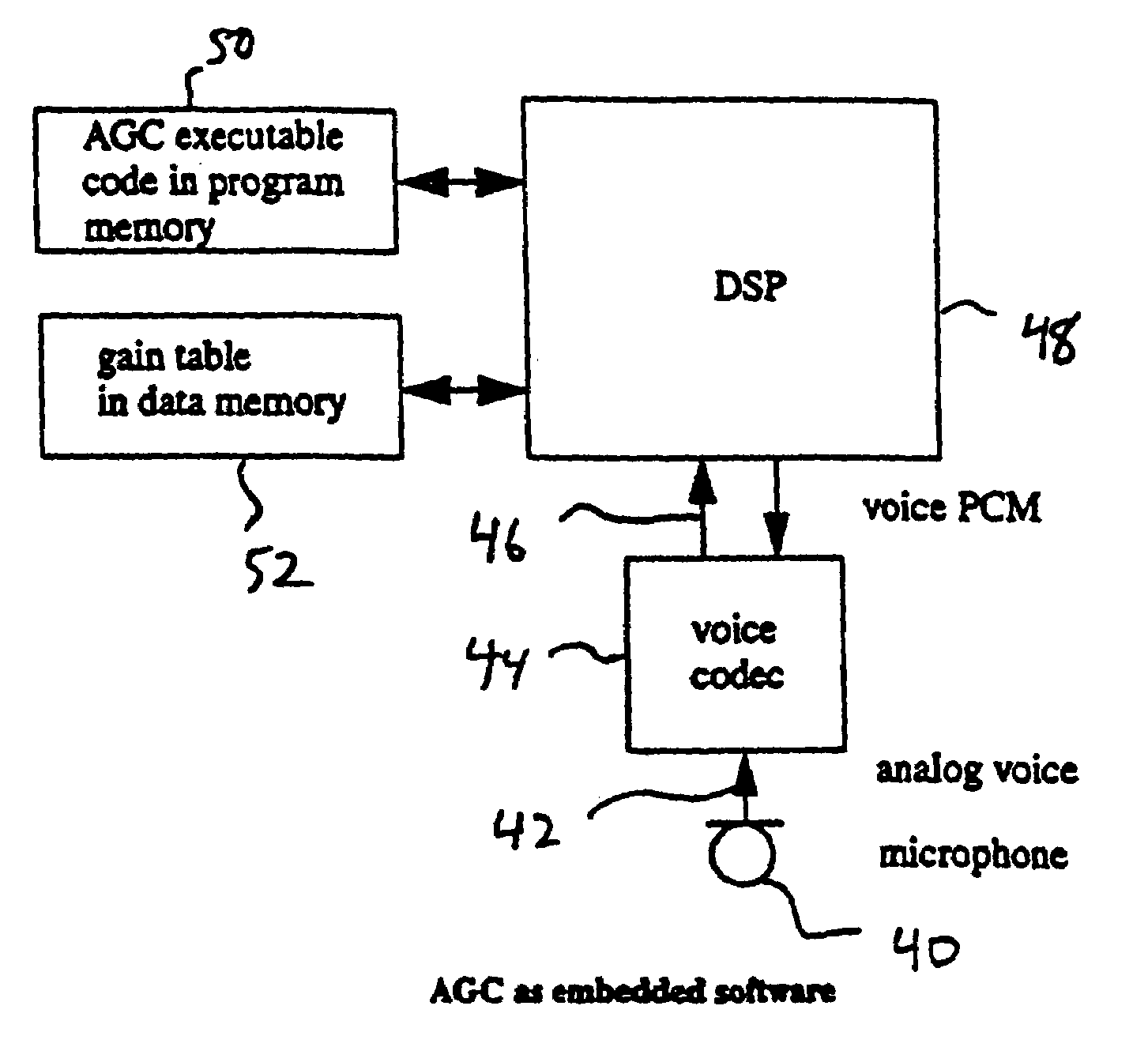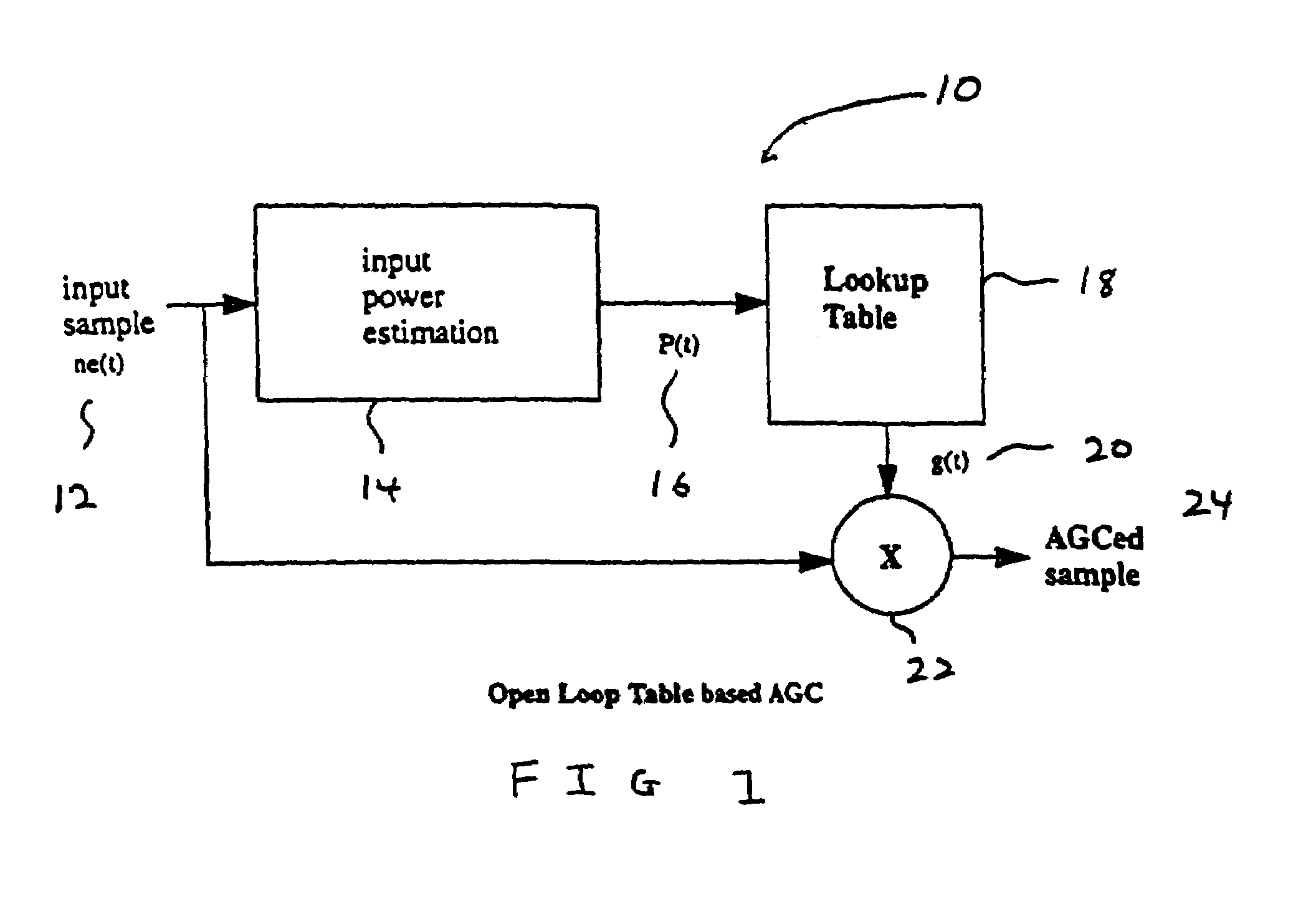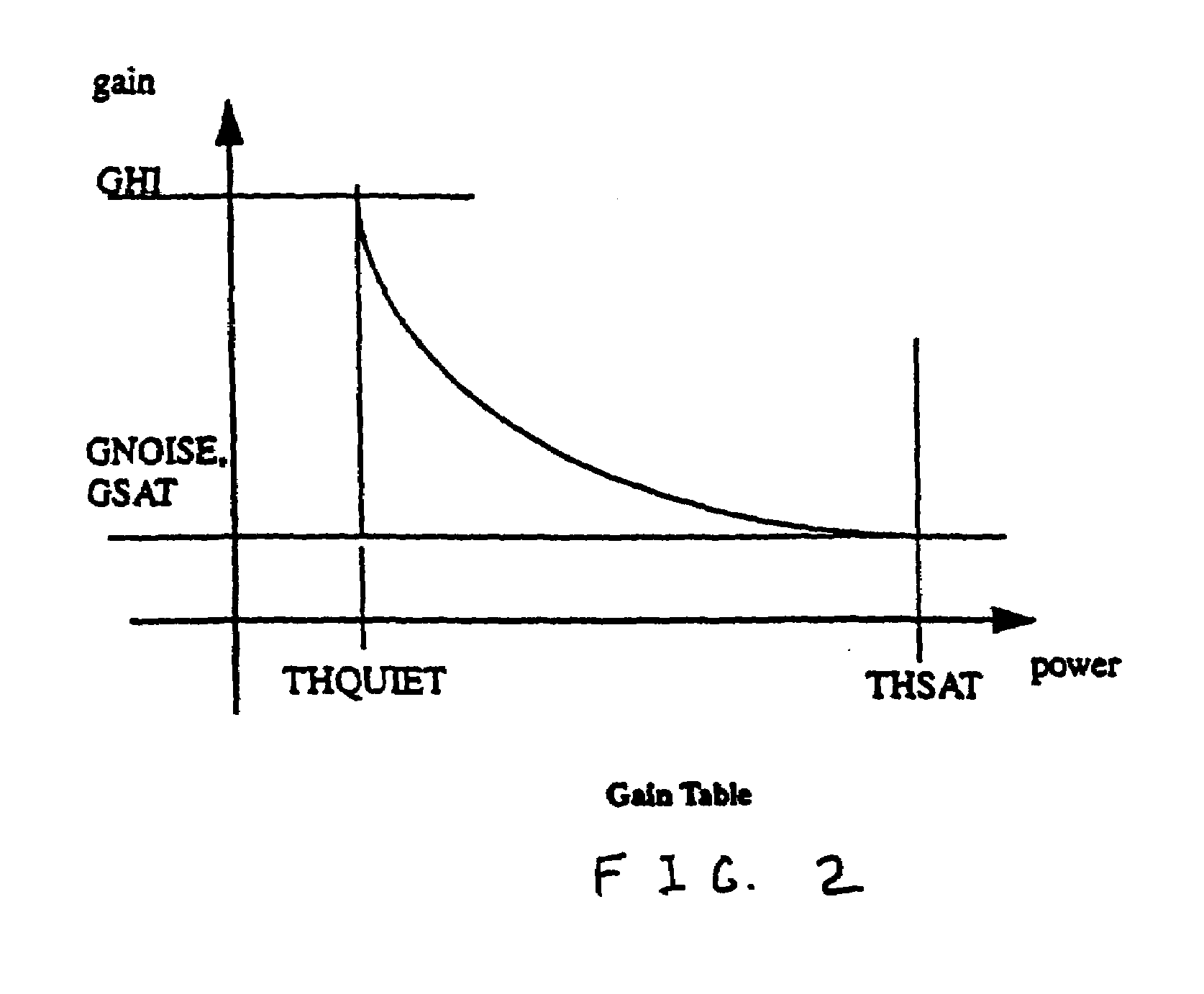Method and system for automatic gain control with adaptive table lookup
a technology of automatic gain control and adaptive table lookup, which is applied in the direction of electrical equipment, substation equipment, interconnection arrangements, etc., can solve the problems of loud volume of speakers physically situated near the microphone, people involved in the conversation most likely to be different, and other speakers are barely audibl
- Summary
- Abstract
- Description
- Claims
- Application Information
AI Technical Summary
Benefits of technology
Problems solved by technology
Method used
Image
Examples
Embodiment Construction
[0026]FIG. 1 is a block diagram of an illustrative embodiment of the invention describing an open loop AGC system. The input sample signal ne(t) 12 is fed to an input power estimation block 14 to estimate the power Pin(t) 16 of the input signal 12. In an exemplary speakerphone application, the input sample signal ne(t) 12 is typically a digitally sampled voice signal provided from a microphone and voice codec combination. The microphone receives the speaker(s) voices and the voice codec preferably converts the analog microphone signal to a digitally sampled pulse code modulated (“PCM”) signal. In North America, mu-law companding converts the analog signal into an 8-bit sample at 8000 samples per second into a 64 kilobit per second digital signal.
[0027]In an illustrative embodiment, the estimated power Pin(t) 16 is preferably formed over a particular duration of time, as determined by the power estimation or AGC time constant. The input power estimation block 14 preferably estimates ...
PUM
 Login to View More
Login to View More Abstract
Description
Claims
Application Information
 Login to View More
Login to View More - R&D
- Intellectual Property
- Life Sciences
- Materials
- Tech Scout
- Unparalleled Data Quality
- Higher Quality Content
- 60% Fewer Hallucinations
Browse by: Latest US Patents, China's latest patents, Technical Efficacy Thesaurus, Application Domain, Technology Topic, Popular Technical Reports.
© 2025 PatSnap. All rights reserved.Legal|Privacy policy|Modern Slavery Act Transparency Statement|Sitemap|About US| Contact US: help@patsnap.com



